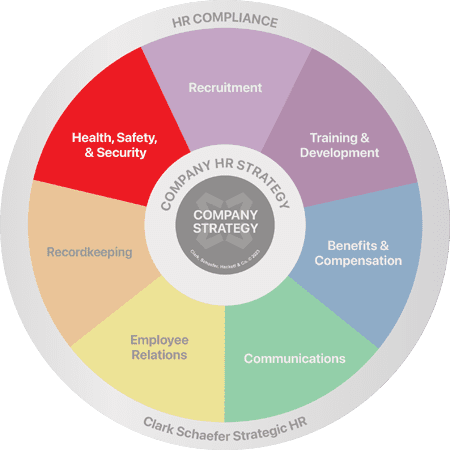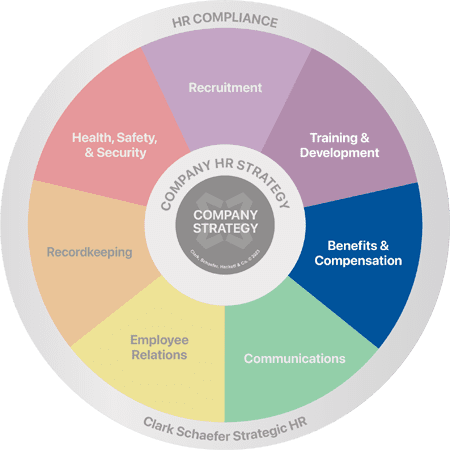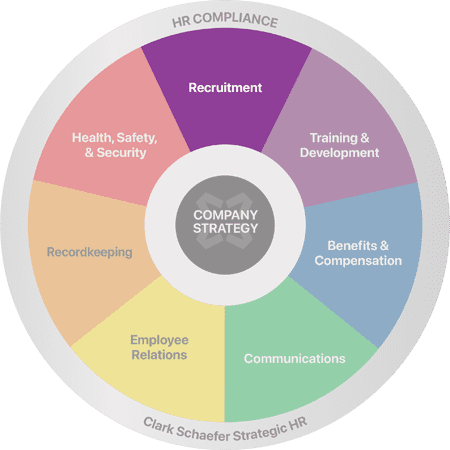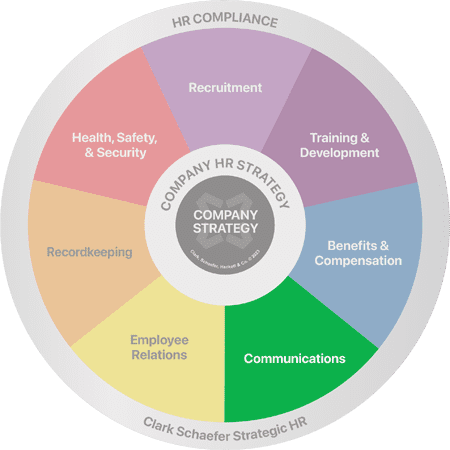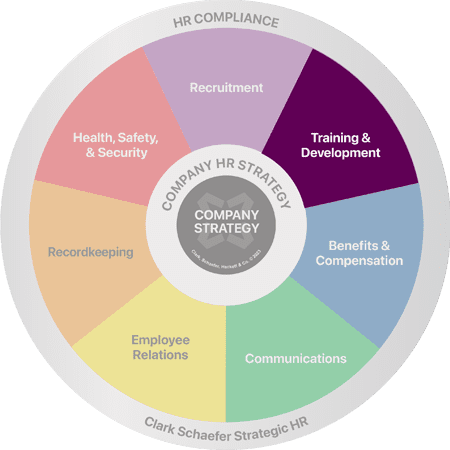Emergency Response Plans: Preparing for Emergencies & Natural Disasters
Last Updated on July 26, 2022 / Health, Safety & Security
HR Question:
Do we need an emergency response plan?
HR Answer:
Would your team members know how to react if there was a tornado? What about a fire or an active shooter? These questions matter because emergency response plans are becoming more critical than ever. Emergency response plans should include the actions that need to be taken, should certain situations occur as well as what to do following the emergency or disaster.
Often, companies may talk about this in terms of a business continuity plan, or having an enterprise resource management plan. Whatever it’s called, it’s important to have so that there are guidelines for how to best respond. “It’s just a way of thinking about what happens after the firetrucks leave, after the tornado rolls through, or after that emergency happens: What are workers going to do?” says Karen Hamel, CSP, WACH, a regulatory compliance specialist and technical writer at New Pig Corp. (New Pig Corp specializes in workplace safety and spill containment products.)
“Part of that is, of course, being prepared for the emergency itself. It’s important to make sure that you have Emergency Response Plans for what the insurance doesn’t cover, too,” she says.
Hamel shares 4 planning tips that can assist leaders with emergency planning and prevention:
Tips for preparing Emergency Response Plans
#1: Predict What Kind of Emergencies Could Happen
Whether it be a natural disaster or a business attack, take the time consider what kind of risks your company has, even if they’ve never happened before. It’s not acceptable to say, “We never thought that would happen.”
“It can be looking at what happened in your facility or looking at the nature of your facility,” explains Hamel. “If you’re a chemical facility and you deal with a lot of hazardous chemicals, how can they affect your employees? How can they impact the environment? If you’re dealing with a lot of flammable products, if you had an explosion, what would the result of that be?
“Look at both natural hazards as well as the manmade ones to determine what might happen at your facility so that you can properly plan and have the equipment, the people, the training that you need to deal with whatever your particular emergencies are.”
Action steps: “The Federal Emergency Management Agency (FEMA), the American Red Cross and other organizations offer free information that can help you become aware of disasters and emergencies you may face. They also offer templates to help facilities begin planning,” says Hamel.
#2: Prepare Your People
After you’ve considered what could happen, start preparing employees. Procedures and drills are important to ensure everyone knows what to do at the time. But also make sure you have the resources that you’ll need after.
“If you have a call center, for example, it could be establishing a different call center. Or, it could be establishing a way for some of your employees to work from home so that you still have the capability of taking customers’ calls, and being ready for those sorts of emergencies if they do happen,” says Hamel.
Action steps: Planning also needs to include your communicate plan. How will you communicate with employees, families, outside responders, mutual aid groups, stockholders, vendors, customers and the media? “Maintaining organizational charts with contact information can seem like a never-ending task, but it is a critical element of emergency planning.”
#3: Focus on Protecting Lives
Life safety is a key principle of every emergency response, and the logistics you have in place need to be able to align with your plan to protect your people (and property). “Make sure that when there is that crisis or emergency, that people and property are taken care of.”
The list is long, but that can include:
- Making sure there is shelter place for employees for certain disasters
- Knowledge and plans of response duties
- Evacuation plans
- Steps to make sure people are accounted for after an emergency
- Back-up power systems
Action steps: Just like standard operating procedures you have, detail the steps to be taken to perform work tasks safely. These emergency response plans need to outline and make visible what procedures the company expects employees to follow when anything out of the ordinary happens.
#4: Be Sure You Practice
“Practice” comes down to training and making sure that people have the tools that they need to do their jobs. And, make sure that they know how to use the tools.
Making sure workers have the confidence and the ability to use whatever tools, resources, supplies are on-site is going to make things go smoother in case of an emergency.
“This is about just making sure that people know what’s expected of them. It can help avoid a lot of chaos, and it can help keep everybody be a lot safer when a response is needed.”
Action steps: Don’t neglect training or drills and do you best to make sure workers have the right attitude about practicing. “Training and drills do take time, but they give everyone the chance to get things right before they are in a critical situation. They also can identify plan shortcomings so that they can be corrected before an emergency. Allow time after drills for everyone to comment on what worked, as well as areas where people may need further training,” says Hamel.
A special thanks to iReportSource for sharing their insights on safety in the workplace and the importance of having Emergency Response Plans. For more information on iReportSource call 513-442-8595. iReportSource allows you to avoid complacency and manage risk, all while helping you to reinforce behavior-based safety practices.
It’s not negative thinking to plan for a devastating event that could harm employees or impact your company’s ability to function – in fact it’s a good business practice. Bad things happen, but it’s how we prepare for and recover from a disastrous event that often leads to success or failure. Strategic HR has a variety of resources to help you prepare for such emergencies. Visit our Health, Safety & Security page to learn more about how we can help you with your Emergency Response Plans OR pick up our Emergency Preparedness Toolkit and do-it-yourself.

